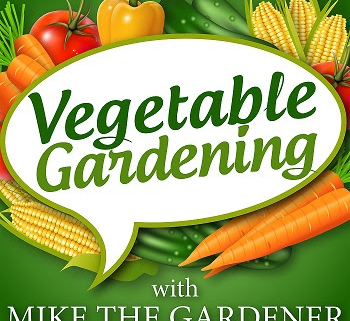Mike Podlesny: Hi, Stacey! Can you tell us a little about yourself and your background?
Stacey Chillemi: Hi, My name is Stacey Chillemi, and I am the author of the book, The Complete Guide to Natural Healing: A Natural Approach to Healing the Body and Maintaining Optimal Health Using Herbal Supplements, Vitamins, Minerals, Fruits, Vegetables and Alternative Medicine. My passion is helping others discover the surprising secrets to healing the body and maintaining excellent health for life. I have dedicated my life to the field of health, alternative medicine, and herbal medicine. My mission is to educate others and share with them the natural remedies to stay healthy, restore health, and look and feel younger.
I am an advocate for healing the body naturally and maintaining optimal health using herbal supplements, fruits, vegetables, and alternative medicine, a way of life that does away with unnecessary medicines and over-the-counter drugs that pose a threat to our health in the long run.
Some of my books in this area include The Complete Herbal Guide, Natural Cures for Common Conditions, The Secret To Happiness & Success: Master The Power Of Positive Thinking, Epilepsy You’re Not Alone, Epilepsy and Pregnancy and Live, Learn and Be Happy with Epilepsy which is about learning about your disorder and how to cope with it.
My new book, “Natural Remedies for Common Conditions is about How to Prevent, Heal and Maintain Optimum Health and is now available on Amazon, B&N, and other online and retail bookstores.
Mike Podlesny: How did you get into teaching alternative medicine and herbal remedies?
Stacey Chillemi: I developed epilepsy at the age of five. I had struggled with this illness all my life. Many years ago, I began working for an herbalist, and I became very interested in herbs.
I began detoxifying my body, I changed my lifestyle (eating, sleeping) I incorporated meditation and yoga into my life; I began cleansing my body from all negative energies. I went from nine seizures a month, down to 6, then 5, then 3 to 1 then to none. I now have been seizure free for over 15 years. This is what drew my interesting in healing the body.
Mike Podlesny: What is alternative medicine?
Stacey Chillemi: Alternative medicine takes on many forms in a wide variety of guises, from remedies such as Herbs, Oils, Massage, Tai Chi, Chinese Acupuncture, and chiropractic.
Alternative medicine includes a broad range of practices from remedies such as Herbs, Oils, Massage, Chinese Acupuncture, and chiropractic. Others focus on diet changes, the practice of yoga, and emphasizing the connection of mind, body, and spirit.
This is just a short list of a very long list of alternative therapies. Many people use some form of alternative medicine when they take vitamins or herbal supplements
Mike Podlesny: What is an herbal remedy?
Stacey Chillemi: An herbal remedy is a solution for health problems that uses plants or plant extracts. The remedy may be prescribed by a physician, nutritionist, or herbalist. Herbal remedies are often considered alternative medicine, natural medicine, or known as home remedies because they do not require a physician’s prescription or traditionally manufactured medication. The most common forms of herbal remedies include teas, tinctures, creams, oils, and supplements.
3 Important Tips to Remember
Natural substances often work like drugs in the body, so remember:
- Don’t assume it’s safe. Herbs are not regulated by the FDA for safety or efficacy. So search the label for a seal of approval from the USP (United States Pharmacopeia) or CL (Consumer-Lab.com), which indicates it has been approved by certified academic laboratories. For a fee, you can research particular products at ConsumerLab.com.
- Talk with your doctor. It’s best to tell your doctor that you are considering supplements. Some herbs can interact with certain meds, including those for high blood pressure, diabetes, and depression, blood thinners and even OTC drugs.
- Don’t overdo it. More isn’t necessarily better—and could be dangerous. Always follow dosing instructions.
Mike Podlesny: What type of people are these practices meant for? (i.e. kids, seniors, anyone)
Stacey Chillemi: Anyone can use these practices.
Mike Podlesny: What are some “power” foods/herbs in using these methods, and why are they considered the optimal choices?
Stacey Chillemi: Here are some of my favorite fruits and vegetables that are inexpensive, and you can quickly grow in most gardens
Blueberries
Each small berry packs a punch of antioxidants. They are a top pick by doctors and nutritionists because they lower your risk of heart disease and cancer while acting as an anti-inflammatory. There is a blueberry for every garden — small, tall, semi-evergreen, deciduous, blue, or pink. One easy pick is ‘Sunshine Blue,’ with ornamental qualities and exceptional taste. This variety thrives in fall and winter. Its bluish-gray leaves transform to crimson, making it an ideal four-season plant.
Quinoa
A popular grain in the food world, quinoa is touted to be packed with protein and fiber. Although it hails from South America, you can grow it in your backyard. The grain is harvested from the dried seed pods. We like a variety called Brightest Brilliant Rainbow — the seeds can be harvested in 90–120 days, but in the meantime it creates visual interest in your garden.
Kale
Any type of green is healthy for the body, but kale is a powerhouse. It is rated as one of the best veggies for absorbing free radicals, which have been linked to diabetes, Alzheimer’s, and rheumatoid arthritis. Lacinato Kale, also known as Dinosaur or Tuscan Kale, has a sweet, mild flavor, especially when harvested at a young age. It’s a gorgeous blue-leaf Italian heirloom variety that tastes fantastic in soups.
Chia Seeds
Known for their omega-3 fatty acids that stabilize blood sugar, lower cholesterol, and boost energy, tiny Chia seeds play a big role in the superfood world. Chia seeds are cultivated from Saliva hispanica, a member of the mint family. Grow this plant like an annual herb and harvest seeds when the flower pods have dried. Chia seeds will germinate in two to three weeks, and the plant can reach up to 3 feet.
Sweet Potato
One of the oldest cultivated foods in the Americas is packed full of vitamins, minerals, and fiber, and is rich in antioxidants and anti-inflammatory properties. LSU Agriculture Department has been working on breeding new cultivars of sweet potatoes. Try ‘Bonita,’ a newer variety with flesh truer white than older cultivars. Its texture is flaky when cooked, like a classic baking potato, with a sweet and nutty flavor.
Goji Berry
This fruit has a long history in Chinese medicine, and it’s becoming increasingly popular in the American horticulture market. Full of vitamins C and E, beta-carotene, and lycopene, the fruit is typically consumed dried like a raisin and has a strong sweet-sour flavor profile. If consumed fresh, it can have a very tart taste. Proven Winners has recently introduced two different goji berries to their collection: Sweet Lifeberry and Big Lifeberry. They grow like other vine crops (such as raspberries): As the canes get older, they will strengthen. Supporting with a fence or trellis would be helpful, although they can be easily grown in a container.
Microgreens
Scientists are now confirming that microgreens — greens and herbs harvested within 14 days of their growth cycle — have a greater concentration of vitamins and minerals than their fully-grown counterparts. In one study, the younger greens had four to six times more beneficial nutrients. There are several different microgreens to choose from, including Microgreens Milk Mix seeds, which are ready to harvest within five to ten days. Growing greens by seed are simple: Sprinkle the seeds over the soil and cover it with a very thin layer of potting soil. Microgreens are perfect for containers and window boxes.
Beets
Beets are coined “nature’s multivitamin” because they can ward off diseases from the common cold to cancer. This healthy vegetable has been appearing on roasted-beet salads in restaurants for years. The roots are beneficial, and the leaves are just as edible and healthy. Try varieties like ‘Golden,’ ‘Chioggia’ and ‘Bull’s Blood. The colors of golden and ruby beets look gorgeous when combined in a dish.
Lingonberries
These little red Scandinavian berries are one of the newest superfoods. Their berries are extremely tart and often made into jam or jelly. You often see them paired with Swedish pancakes as a topping. However, that same jam could be added to milk to make a fantastic smoothie. Loaded with tons of nutrients and believed to help with many health problems, lingonberries are part of the blueberry family. They prefer acidic soil just as their relative does.
Pumpkins
Containing one of the richest supplies of carotenoids, just a half-cup serving of pumpkin gives you more than two times the recommended daily dose of alpha-carotene. Not only is the flesh good for you, but so are the seeds. There are plenty of different varieties to choose from, but it really depends on the size of your garden. For smaller gardens, try ‘Wee B Little’ pumpkin from Bonnie Plants. This variety is small, so it doesn’t need a ton of room, and the fruit is versatile
Potatoes
Potatoes are another fantastic vegetable to grow with your children because you can plant them in most parts of the country between February and May. Starting a potato seed is like a science experiment, which alone will delight your children. Start by sitting your seed potato in daylight until eyes begin forming and leaves begin to sprout. Then, transplant your potato to a bucket, clean trashcan, laundry basket, or garden to allow them to grow. I prefer growing mine in a laundry basket because my son can see the potatoes as they form and grow.
The best part – a baked potato bar instead of Friday pizza night with the kids – has a spread of fresh vegetables and condiments to top a baked potato, and your children will love growing them every season.
Tomatoes
- Oxidized LDL. LDL is the bad part of our cholesterol. In studies of healthy people and those with type 2 diabetes, consumption of tomatoes or tomato products decreased levels of oxidized LDL.
- Body Inflammation. Markers of inflammation in our body have been shown to be associated with heart disease, heart attack, stroke, and atrial fibrillation risk. Tomato consumption has been shown to reduce some of these markers of inflammation, suggesting an improvement in inflammatory status, particularly in overweight and obese people.
- Blood Pressure. In patients with pre-high blood pressure (prehypertension) or hypertension, tomato and tomato product consumption has a modest lowering effect on both systolic and diastolic blood pressure. This can be seen as early as 8 weeks after starting frequent consumption.
- Improved survival in patients with heart failure. In a study of 212 patients with heart failure, higher lycopene intake from tomatoes was associated with improved survival. Patients with low lycopene intake were 3.3 times more likely to die than those with high lycopene intake.
- Reduced risk of stroke. In a study of 1,031 men from Finland, high lycopene consumption from tomatoes was associated with a significantly lower risk of stroke than men with low consumption. This study reduced stroke risk by 65 percent with high lycopene consumption.
Broccoli
- Controls Blood Pressure: Broccoli contains Potassium, a vital nutrient for the stabilization of blood pressure, maintaining a healthy nervous system, and neutralizing sodium’s harmful effects on blood pressure.
- Improves Digestive System: Broccoli contains both soluble and insoluble fibers, that cleanse the colon and digestive tract, expel toxins and cholesterol and keeps healthy blood sugar levels.
- Fights Depression. Broccoli replenishes your folic acid levels, deficiency of which can lead to depression, fatigue, poor memory, and mental problems like schizophrenia. Increasing blood circulation especially to the brain clears the melancholy and recharges you.
- For Healthy Bones: Broccoli contains calcium and vitamin K, both of which are essential for bone health and to prevent osteoporosis. Vitamin K is essential for the proper formation and full activation of the Gla proteins osteocalcin, which when fully carboxylated by vitamin K, allows for the binding of calcium to the bone matrix.
- Prevents Cancer: Broccoli has anti carcinogenic properties from phytochemicals, indoles and isothiocyanates that can remove estrogens and fight against breast, bladder, colon, and ovarian cancer.
- Fights Heart Disease: Vitamin B6 and folate contained in broccoli offer protection against heart disease and stroke. In addition the abundance of fibers, fatty acids and vitamins help regulate blood pressure and reduces bad LDL cholesterol. Vitamin K also reduces the risk of arterial calcification.
- Improves Immunity: Broccoli contains high levels of potent antioxidant vitamin C in addition to phytonutrients and phytochemicals, including sulforaphane, which helps boost the immune system, eradicates toxins and shields against various infections and viral attacks.
- For Healthy Vision: Broccoli contains vitamin A, zeaxanthin, and lutein, which prevent age-related degeneration macular degeneration, cataracts and boost retinal health.
- Prevents Skin Damage: Broccoli is rich in beta carotene, folates, vitamins B, C and E, which stimulates skin immunity and collagen production. A vital substance in Broccoli, Glucoraphanin, gets converted into sulforaphane that repairs skin damage, reducing the appearance of fine lines, wrinkles, pigmentation and inflammation caused by exposure to ultraviolet radiation.
- Helps Weight Loss: Presence of soluble and non-soluble fibers helps lower cholesterol levels, while increasing satiety and bulking up stools for easy expulsion.
- For Hair Growth: Vitamins A, B6 and C stimulate the production of sebum, an oil based secretion that acts as a natural moisturizer and conditioner for scalp and hair whereas calcium strengthens the hair follicles. Nutrients in Broccoli can inhibit dihydrotesterone or DHT which is closely related to hair loss and thinning. Also contains Erucic acid, an omega-9 fatty acid for lustrous shine and hair volume.
- Nutrient Powerhouse: Broccoli is a good source of nutrients like soluble/insoluble fiber, vitamin A, B-complex, C, E, beta carotene, folate, and omega 3 and 9 fatty acids, and minerals like potassium, magnesium, iron, manganese which are necessary for a healthy body.
- Supports Healthy Nervous System: Potassium strengthens your nervous system and assists in smooth functioning of the brain. Broccoli also increases blood circulation in the brain cells.
- Detoxifier: Broccoli contains glucoraphanin, gluconasturtiin and glucobrassicin which are special nutrients that help to detoxify the waste components from the body. Insoluble fiber makes its way through the digestive system relatively intact, acting as a sort of sweeping compound and making the stool softer and bulkier.
- Prevents Anaemia: Broccoli contains loads of iron and folic acid that help in preventing anaemia.
- Anti-Inflammatory: Broccoli is a particularly rich source in a flavonoid called kaempferol, which helps to battle allergies and inflammation.
Mike Podlesny: Can you tell us about some powerful herbs we should consider growing in our garden?
Stacey Chillemi: The humble herb and spice rack in your kitchen today need not be just a decorative feature, although they look quite pleasing to the eye hanging on the wall, in both modern and old fashioned styled homes. They can in fact hold a plethora of natural healing ingredients that can also add great taste to the foods you eat every day.
Here are some of my favorite herbs that are inexpensive and you can easily grow in most gardens.
Basil – Basil can help relieve gas and soothe stomach upsets. One possible explanation for its calming effect is a compound called eugenol, which has been shown to help ease muscle spasms. Research is still preliminary, but laboratory studies also suggest that compounds found in basil may help disrupt the dangerous chain of events that can lead to the development of cancer.
Clove – Oil of clove is 60 to 90 percent eugenol. It is a potent pain deadening antimicrobial. Clove has earned the official endorsement of the FDA as an effective stopgap measure for tooth pain. Clove is also among the spices that can help the body use insulin more effectively, thus lowering blood sugar somewhat. In one lab study, clove was also found to speed healing of the dreaded cold sores.
Dill – Dill has been used to soothe the digestive tract and treat heartburn, colic and gas for thousands of years. In fact, the word dill comes from the Old Norse word dilla, meaning to lull or soothe. The herb has an antifoaming action that suggests why it might help break up gas bubbles. Like parsley, dill is rich in chlorophyll, which also makes it useful in treating bad breath.
Fennel – Rich in volatile oils, fennel is what’s known as a carminative herb, meaning that it can ease bloating, gas pains, and digestive spasms in the small and large intestines. Fennel can also reduce bad breath and body odor that originates in the intestines. Women who are breastfeeding may find that fennel, which works in a way similar to the body’s hormones, increases milk flow.
Garlic – Intact garlic cloves contain an odorless, sulphur-containing amino acid called alliin. When the garlic is crushed, alliin becomes allicin. Research shows that allicin helps lower cholesterol and blood pressure and also helps prevents blood clots. Garlic can also reduce the risk of developing atherosclerosis (hardening of the arteries). Compounds in this familiar bulb kill many organisms, including bacteria and viruses that cause earaches, flu and colds. Research indicates that garlic is also effective against digestive ailments and diarrhea. What’s more, further studies suggest that this common and familiar herb may help prevent the onset of cancers.
Ginger – When it comes to quelling the queasiness of motion sickness, ginger has no equal say herbalists. In fact, researchers have demonstrated that ginger beats dimenhydrate, the main ingredient in motion sickness drugs such as Dramamine, for controlling symptoms of seasickness and motion sickness. Ginger stimulates saliva flow and digestive activity, settles the stomach, relieves vomiting, eases pain from gas and diarrhea, and is effective as an anti-nausea remedy. This aromatic herb also helps lower cholesterol. Herbalists have also found it to be useful as a pain reliever.
Mint – Herbalists the world over use mint, as a premier stomach tonic, to counteract nausea and vomiting, promote digestion, calm stomach muscle spasms, relieve flatulence, and ease hiccups. Menthol, the aromatic oil in peppermint, also relaxes the airways and fights bacteria and viruses. Menthol interferes with the sensation from pain receptors, thus it may be useful in reducing headache pain. Scientific evidence suggests that peppermint can kill many kinds of micro-organisms, and may boost mental alertness. In one study, people who inhaled menthol said they felt as if it relieved their nasal congestion, although it didn’t increase their measurable air flow.
Oregano – Oregano contains at least four compounds that soothe coughs and 19 chemicals with antibacterial action that may help reduce body odor. The ingredients in oregano that soothe coughs may also help un-knot muscles in the digestive tract, making oregano a digestive aid. This familiar spice also contains compounds that can lower blood pressure too.
Parsley – Diuretic herbs such as parsley prevent problems such as kidney stones and bladder infections and keep our body’s plumbing running smoothly by causing it to produce more urine. They also relieve bloating during menstruation. Also there’s a reason for that parsley on the edge of the diner plate, it’s not just there for fancy decoration; it’s an effective breath freshener because it contains high levels of chlorophyll.
Rosemary – Rosemary is one of the richer herbal sources of antioxidants, which have been shown to prevent cataracts, and contains 19 chemicals with antibacterial action that help fight infection. Traditionally used to ease asthma, this common culinary ingredient has volatile oils that can reduce the airway constriction induced by histamine, that chemical culprit of asthma and other allergy symptoms. Herbalists think that rosemary may also help ease breast pain by acting as a natural drying agent to fluid filled cysts.
Sage – The oils found in sage are both antiseptic and antibiotic, so it can help fight infections. Sage is effective for symptoms of menopause, night sweats and hot flashes, because of its estrogenic action and because its tannins can dry up perspiration. There’s also compelling evidence that sage may be of value to people with diabetes for whom the hormone insulin does not work as efficiently as it should. Lab studies indicate that sage may boost insulin’s action.
Thyme – Thyme contains thymol, which increases blood-flow to the skin. The warmth is comforting, and some herbalists believe that the increased blood-flow speeds healing. Thyme relaxes respiratory muscles and is endorsed for treating bronchitis by Commission E, the expert panel that judges the safety and effectiveness of herbal medicines for the German government. Aroma therapists say that thyme’s scent is a mood lifter.
Turmeric – Many clinical studies agree that curcumin in turmeric has anti-inflammatory effects, including a significant beneficial effect in relieving rheumatoid arthritis and carpal tunnel syndrome. Curcumin, which gives this spice its familiar yellow pigment, may also lower cholesterol. Turmeric is also packed with antioxidants, including vitamins A, C, and E, which have been shown to prevent cataracts.
Passed down to us by our forefathers and countless generations throughout the world, these 15 food additives and enhancers are just a selected few that are currently known to have medicinal and beneficial properties, yet represent the more commonly used. By including these herbs and spices into your daily cooking or diet on a regular basis, you will greatly enhance your quality of life, and reduce the need for those expensive, and often damaging pharmaceutical drugs.
Mike Podlesny: What does it mean to detoxify the body?
Stacey Chillemi: Detoxification is about resting, cleaning and nourishing the body from the inside out. By removing and eliminating toxins, then feeding your body with healthy nutrients, detoxifying can help protect you from disease and renew your ability to maintain optimum health.
Mike Podlesny: What methods can someone use to detoxify the body?
Stacey Chillemi:
- Eat plenty of fiber, including brown rice and organically-grown fresh fruits and vegetables. Beets, radishes, artichokes, cabbage, broccoli, spirulina, chlorella, and seaweed are excellent detoxifying foods.
- Cleanse and protect the liver by taking herbs such as dandelion root, burdock and milk thistle, and drinking green tea.
- Take vitamin C, which helps the body produce glutathione, a liver compound that drives away toxins.
- Drink at least two quarts of water a day.
- Breathe deeply to allow oxygen to circulate more completely through your system.
- Transform stress by emphasizing positive emotions.
- Practice hydrotherapy by taking a very hot shower for five minutes, allowing the water to run on your back. Follow with cold water for 30 seconds. Do this three times, and then get into bed for 30 minutes.
- Sweat in a sauna so your body can eliminate wastes through perspiration.
- Dry-brush your skin or try detox foot spas/foot baths to remove toxins through your pores. Special brushes are available at natural products stores.
- Exercise, yoga or jump-roping are good. One hour every day.
Mike Podlesny: Why is it important to detoxify the body?
Stacey Chillemi: The body undergoes a lot of wear and tear both inside and outside so it is important to ensure that the body is taken care of in order to compensate for this. Just like a car engine which needs to be serviced and have its oil removed and changed, the body also has to be detoxified in order for it to function properly and to promote general health and well-being. During the course of an individual’s life they ingest a variety of foods; some of which are healthy and some of which are not so healthy. The fact is that not all of this food is successfully absorbed by the body as nutrients and not all of it is discharged out of the body as waste products, there are always remnants and these remnants become toxins that are left in the bowel and colon of the body. Over a long period of time, this can have some adverse effects on the body if these toxins are not removed.
A lot of the foods which most people eat on a daily basis have a very high acidic content which can have a negative effect on the body if this acidity is allowed to accumulate in the body without being removed at some point. It is necessary for the body’s alkaline PH balance to be restored in order to aid the renewal and repair of cells and to promote general well-being and a short detox program can do this for you. It is not only important to detoxify the body, it is necessary to do so as regularly as possible in order to maximize the benefits that are obtained from doing so.
Furthermore, purifying and keeping your body clean through detoxification is the best way to avoid colon diseases, as well as maintaining a healthy bloodstream and heart. The important thing to remember about toxins is the fact that they are absorbed into the bloodstream and carried to other parts of the body and can lead to a variety of health issues because the body’s immunity against disease is weakened by the presence of toxins and waste. So a detox program is highly essential in order to aid the body’s ability to fight off disease.
Mike Podlesny
Mike’s “The Gardener” blog is http://www.averagepersongardening.com/blog receive thousands of hits from aspiring vegetable gardeners daily.











 © 2024 The Advisor With Stacey Chillemi. All rights reserved.
© 2024 The Advisor With Stacey Chillemi. All rights reserved.